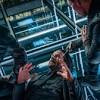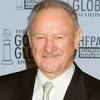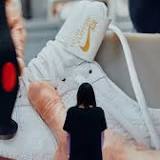James Meek | 22/2/22 · LRB 22 February 2022


What is it about the 22nd of the month? Two months ago Vladimir Zhironovsky, the politician who once seemed the most dangerous face of Russian nationalism but is now just another ageing Putin fanboy, predicted the world would ‘feel our new policy’ at four a.m. on 22 February. It was on 22 June that Hitler began Operation Barbarossa, the invasion of the Soviet Union. In a hit Russian folk song of the time, written a few days later, the date was liltingly linked to Ukraine:
It was June twenty secondRight on the stroke of fourBombs fell on Kiev, radio news saidThat we were having a war.
Every day I ask people in Kyiv, and ask myself, whether the Russian president could seriously intend an assault on the Ukrainian capital. After yesterday’s rant, and his announcement today that he considers areas of Donbas controlled by Ukrainian forces no longer part of Ukraine, it seems more possible. More young men could be ordered to lay down their lives violently on Ukrainian earth around Kyiv, even as the bodies of Soviet soldiers from the 1940s are still being found. A number of volunteer groups using metal detectors regularly turn up Red Army soldiers; their helmets make the detectors ping easily. I spoke to one volunteer, Pavlo Netyosov, who said his group finds up to fifty sets of human remains a year.
I met Netyosov in his museum, a dark little set of rooms on two storeys, festooned with old weapons from the war in Donbas, including the casings of anti-tank missiles. I sat on a sofa of sandbags and faced Netyosov over a desk lit with lamps that had rifle stocks for stands and Nazi helmets for shades. The detectorists find German remains too.
Instead of dogtags, a Soviet soldier carried in his pocket a screw-top ebonite cylinder, about the size of a pen cap, containing a roll of paper with his name, rank, age, family details and blood group.
‘In 2013, before the Donbas war, we found the remains of four soldiers, most of them from Stavropol [in southern Russia],’ Netyosov said. ‘We managed to reach the son of one of them. He remembered being four years old, his father very tense, his mother saying goodbye, him going to hug his father, his father putting him to one side and embracing his mother, and his father leaving. He never saw him again.’ In those days of relatively warm Russian-Ukrainian relations, a delegation came from Stavropol to collect the remains.
Netyosov ended up on the front in Donbas during the early years of the conflict, not fighting but collecting from no man’s land the bodies of Ukrainians killed. He realised that for all his avid reading of Second World War books he knew nothing of the scale of modern war. He might see eight dead in a blown-up column of vehicles, he said, but in three days of the defence of Kyiv in 1941, in a single area of a few square miles, the Red Army lost 2200 people. ‘You think: “If it takes me a whole truck to take away eight people, how can you take away 2200?” And then you understand that nobody did take them away.’
I asked Netyosov if he had any guesses about Putin’s timetable. He pointed to the enormous modern building opposite, surrounded by security fencing. It looked quite un-Ukrainian; like a slightly menacing retail warehouse. It was the US Embassy. ‘When they took the flag down from there and everyone left, I knew things were bad,’ he said.
He showed me pictures of the fortifications of Kyiv in 1941. It had been an ukreprayon, a fortified district; an elaborate set of defences were built on its landward side at the turn of the 1920s and 1930s. Citizens were marshalled into digging deep ditches; there were walls of sandbags higher than people; there were hedgehogs, three lengths of steel girder welded together crosswise to create a barrier against armoured vehicles. None of these things are to be seen in the city now.
‘Kyiv has a very advantageous territorial situation,’ Netyosov said. ‘It’s surrounded by rivers and swamps. All this can be used for defence. Right now it’s not being used. Evidently the powers that be are hoping for the best. There’s a very strong contrast between what people see there [in Donbas] and what it’s been like here, where people have been quietly going about their business for eight years.’
This afternoon I watched Iryna Tsilyk’s extraordinary documentary The Earth is Blue as an Orange, about a family of five – four children and their mother – living in the ‘grey zone’ of the Donbas conflict, in a town called Krasnohorivka, a couple of miles from territory controlled by the rebels and, now, openly, by their Russian sponsors. In the course of the film, while they deal with shellfire and fear and the breakdown of basic services, the children’s school somehow keeps going and the family makes a short feature of their own. The eldest daughter, Mira, gets into university in Kyiv to study cinematography.
When I’d finished the film, which came out in 2020, I got into a cab and took a short ride to see Iryna. The documentary is to go on tour, starting in the Baltic states, and the family is going too. Since the film was made, the mother, Anna, has had another baby, and Anna’s mother has died of Covid. They were all staying in a sweltering flat, watching cartoons. They offered me tea with lemon and slices of bread and sausage.
In a way Anna is relieved to be away from home with her family. There’s been intensive shelling. The water supply has been cut off to the town of six thousand people, and won’t be restored for months. She has to go two kilometres to get water from a well. The town used to have gas, but when that was cut off, everyone made their own stoves and burned coal; then electricity came back, and people abandoned their stoves for electric heaters. Now the electricity keeps going off. Sometimes people die of cold. Mobile signals keep cutting out. Movement around town is constrained by minefields and snipers. And yet in spite of everything the house is their home. She wants to be able to go back to it; she hopes it will still be there. But – such is the confusion of the times – she also thinks about the possibility of moving, even though she would be lucky to get two thousand dollars for the house. She began to weep.
‘I took the childhood of my oldest children, and I can’t bring myself to take away the childhood of my youngest,’ she said. ‘Nothing’s keeping us there any more. Why should we put up with that? It’s so hard.’ In 2015, a family in town were sitting down to eat; it was quiet outside; they were near the window. A shell went off and a fragment of glass killed their son.


 United Kingdom
United Kingdom Argentina
Argentina  Australia
Australia  Austria
Austria  Brazil
Brazil  Canada
Canada  Germany
Germany  Ireland
Ireland  Italy
Italy  Malaysia
Malaysia  Mexico
Mexico  New Zealand
New Zealand  Poland
Poland  South Africa
South Africa  United States
United States 

























